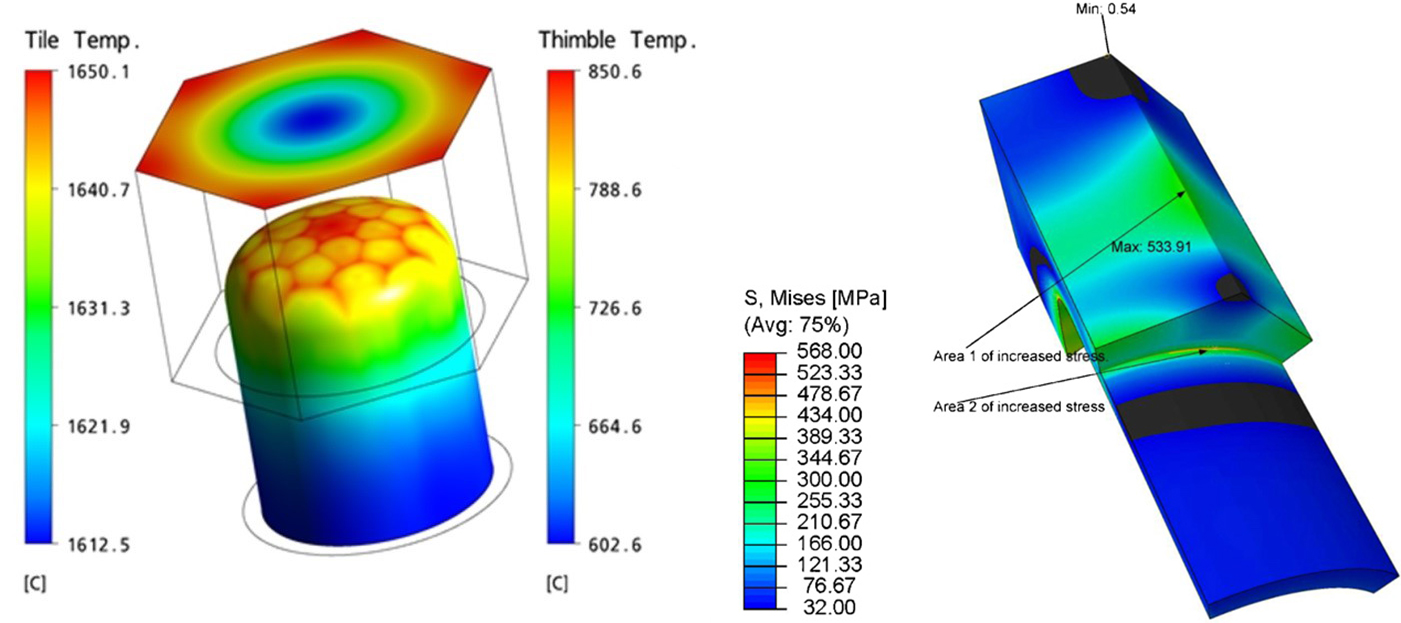Divertor high heat flux helium cooling
A successful design of the helium-cooled divertor should be able to remove very high heat fluxes of at least 10 MW/m2. Preliminary divertor design was developed at Karlsruhe Institute of Technology (KIT) and is based on modular design consisting of small cooling fingers, each cooled by 25 high pressure helium jets. A comprehensive analysis of main operation parameters as well as design variants has been performed within the frame of EFDA research program. Detailed numerical predictions of heat and thermal stress loads in the divertor structures and pressure drop in the helium flow were carried out to ensure that the design constraints and material limits are not exceeded.
Predicted structure temperatures (left) and thermal stresses (right) of the reference cooling finger [Končar et al., 2008 & Končar et al., 2011].
In order to improve the understanding of jet impingement cooling, separate studies on experimentally validated jet impingement cases have been initiated. An insight into complex unsteady flow and heat transfer characteristic of a system of multiple impinging jets is provided by the means of Large Eddy Simulation (LES).

